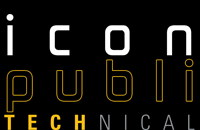
Paolo Castellini, Enrico Esposito, Nicola Paone, Enrico P. Tomasini
Non-invasive measurements of damage of frescoes paintings and icon by Laser Scanning Vibrometer: experimental results on artificial samples using different types of structural exciters
Monday 9 August 2010, by Icon Network
Paolo Castellini, Enrico Esposito, Nicola Paone, Enrico P. Tomasini
Dipartimento di Meccanica, Università di Ancona Via Brecce Bianche, 60131 Ancona - ITALY Phone: +39-71-2204487, Fax: +39-71-2204813 E-mail: tomasini@mehp1.cineca.it
Corresponding Author Contact: Email:aivela@mehp1.unian.it
6th World Conference on NDT and Microanalysis in Diagnostics and Conservation of Cultural and Environmental Heritage, Rome, 1999 May. Published by AIPnD, email: aipnd@numerica.it
Abstract
Frescoes and icons show analogies in terms of defects, both present layer-to-layer detachments and delaminations and surface cracks; the aim of this work is to present the development of a diagnostic system for the measurement of the defects position and size. After initial measurement set-ups based on accelerometers and impact hammers a novel system based on laser vibrometers and acoustic stimulation of structures to allow full remote and contactless investigation of detachments and delaminations is proposed. _. A measurement procedure based on two subsequent scans of the work of art has been defined: the first scan aims at finding defects positions the second one at characterising their resonant response. _. One of the most important problems in every kind of mechanical measurement is to provide an adequate excitation of the object under study. In this work we will present four different kinds of exciters, namely a coaxial loudspeaker, a horn loudspeaker, an acoustic mirror and a piezoelectric actuator, showing some experimental results obtained employing each of them. Moreover a comparison with natural excitation sources will be carried on. _. Also an on field measurement session on large sample walls will be described along with the results obtained that show how efficient this technique has become.
Introduction
_. This work is developed within the LASERART project, which is an EC funded research programme aimed at developing non-intrusive measurement techniques for the diagnostics of the state of conservation of frescoes and icons. These works of art are rather complex multi-layered composite structures, usually made up of many different materials. Therefore they are strongly inhomogeneous non-isotropic structures substantially unknown. _. At present, structural diagnostics of these works of art fully relies on the expertise of the restorer and the typical diagnostic process is accomplished mainly through manual and visual inspection of the object surface. The restorer knocks on the surface and then senses the surface vibrations with his fingertips while listening to the induced sound. The response to these stimuli allows him to identify and characterise the defects. The most important limitations of this technique are the non-objective nature, the poor repeatability and the high cost. _. First attempts to translate this technique into a more systematic approach can be found in Esposito[1] and Mannaioli [2]. The basic idea was that defects could be identified as high mobility areas resonating at some specific frequencies; restorer’s knuckles were substituted with impact hammers and his fingertips with accelerometers. Characterisation of defects could be done by finite element analysis of suitable models. Moreover Esposito employed acoustical excitation of structures (see also Bonarrigo [3]), a first step towards remote measurement techniques. _. Castellini, Paone and Tomasini [4,5] introduced the laser Doppler vibrometer as the remote sensing device substituting the accelerometers. A fully functional set-up employing acoustical excitation was developed thus completing a remote measurement system. _. Again Castellini, Paone and Tomasini [6] described this technique putting in evidence the role it could have to help restorers in their work. _. An updated report on this technique can be found in Castellini, Esposito, Paone and Tomasini [7] where also a first study of the intrusivity of the acoustic excitation is described. Other important defect detection techniques employing optics are described in Fricke-Begemann [8]and Fotakis [9]. _. They employ ESPI (Electronic Speckle Pattern Interferometry) and holographic interferometry respectively to study works of art, the latter describing also many other applications of lasers in this field
You can find the hole article in the following adress: